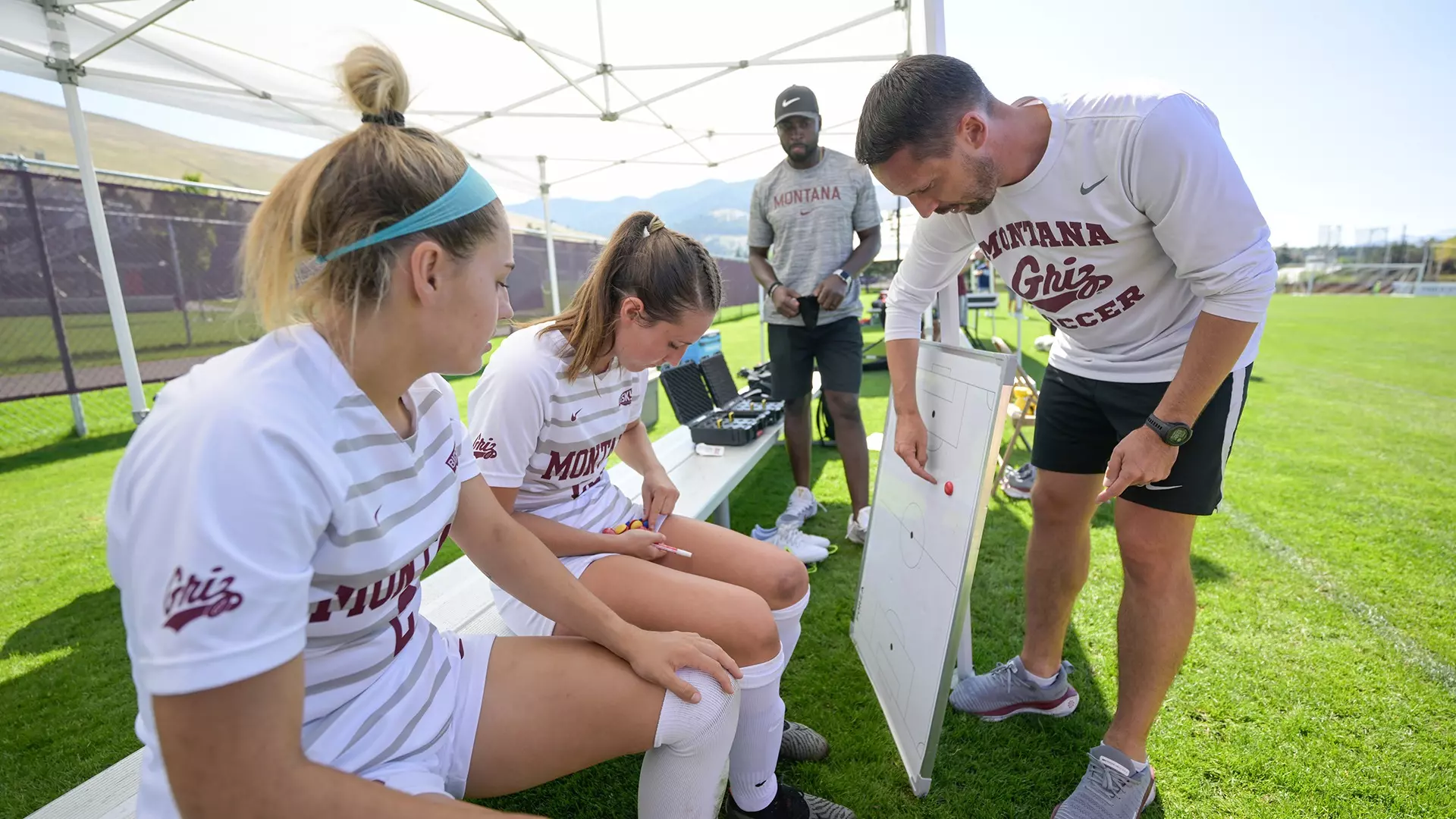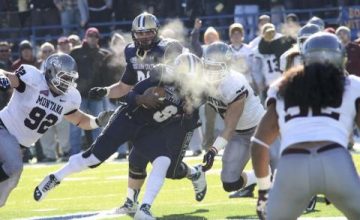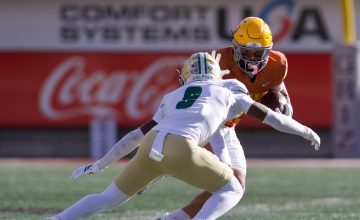How Chris Citowicki and his coaching staff changed formations, overcame an injury crisis and saved Montana soccer’s season
In the hours after his team’s 3-3 draw at Wyoming on September 8, Montana soccer head coach Chris Citowicki faced a short flight and a serious problem.
The flight was routine, short hops from Laramie to Denver and then back to Missoula, where the Griz were scheduled to face North Dakota in four days’ time.
The problem was anything but routine – in fact, it was the kind that can ruin a team’s season.
Already down two starters to injury – all-region goalkeeper Ashlyn Dvorak and steady fullback Mia Parkhurst – the Griz had lost starting striker Delaney Lou Schorr to a broken leg in the first half of the Wyoming game, shortly after she assisted Jen Estes’ opening goal.
After the injury, Montana went down 3-1 but eventually battled back for a draw. Nevertheless, the mood around the team as they boarded the plane was trending black.
Three days before, the Grizzlies had been overrun by Air Force in Colorado Springs – outshot 28 to 4, with only an exceptional performance from redshirt freshman goalkeeper Bayliss Flynn getting Montana a 0-0 draw.
Against Wyoming, uncharacteristic defensive errors handed the Cowgirls their first-half lead – three goals in less than 10 minutes, after the Grizzlies had allowed just five in seven games up to that point in the season.
Most Big Sky coaches still would have been ecstatic with those results — two road points, against two Mountain West teams.

Citowicki is not most Big Sky coaches. Time and time again over his seven years at Montana, he’s made it clear that his ambitions for the Griz stretch beyond the conference, regionally and even nationally. With a chance to make a mark against two of those regional rivals, he felt that the Griz had been almost entirely uncompetitive against Air Force and needlessly sloppy against Wyoming.
“Halftime (against Wyoming) was not a pretty time for us in the locker room, trying to figure out what on earth is going on here,” Citowicki said. “We just kept on going back to the same thing over and over again, and it was getting stale.”
That wasn’t the worst news. Schorr was an important member of the locker room, a valued teammate and senior leader, and her career had just ended in heartbreaking fashion. As they struggled to process that, everyone around the team also had to face what the Griz would look like without Schorr on the field.
The long-legged attacking midfielder from Fort Collins had been the fulcrum of Montana’s attack since moving to striker two years before. As a sophomore in 2022, she scored seven goals in just 739 minutes. As a junior in 2023, she scored five more and added four assists, winning the Big Sky Conference’s Golden Boot for top scorer.
At 5-foot-11, Schorr was dominant in the box, and most of the attacking patterns in Montana’s preferred 4-2-3-1 formation were designed with the end goal of putting a cross on her head.
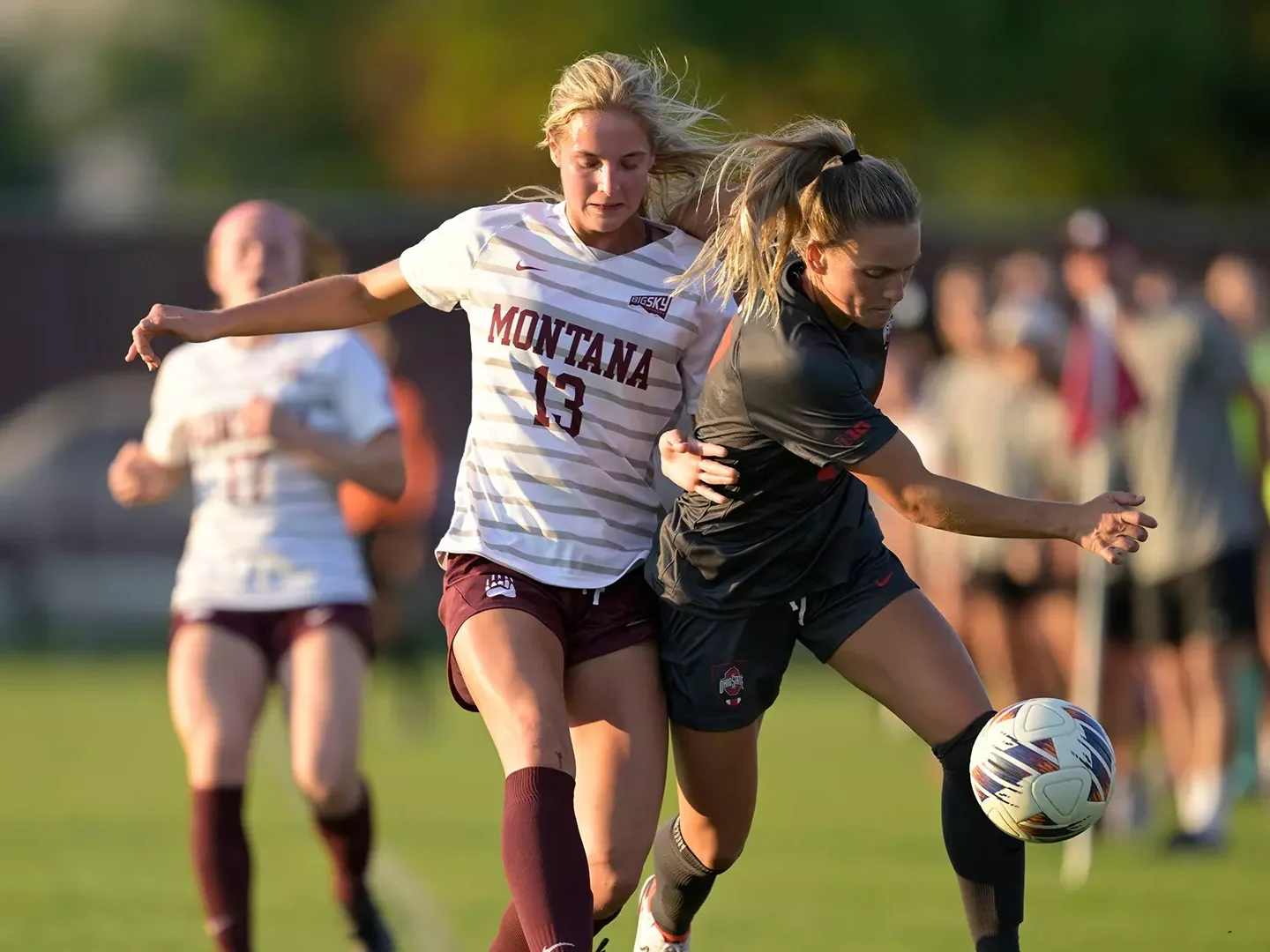
From the opposing six-yard box, Schorr’s influence stretched back throughout the entire field, making her indispensable beyond just her goals. On the rare occasions when the Griz couldn’t build out through the midfield and wingers, they played long balls to Schorr’s head or feet, counting on her physicality and touch to hold the ball up long enough to gain a toehold in the attacking third.
Out of possession, she keyed Montana’s press, her relentless running cutting the field in half and forcing opposing center backs to either play long up the sideline or attempt hopeful passes to the center of the pitch, where Griz midfielders laid in wait.
Dvorak and Parkhurst’s injuries were unfortunate but survivable – Montana had backups that could step in and replicate their roles, if not, perhaps, their talent.
Schorr’s was existential – without her, there were no Montana Grizzlies, at least in their current form.
“When you lose D-Lou (Schorr), you start thinking, who on earth is going to replace that?” Citowicki said. “We’re not going to be good in the air, because we don’t have Delaney, right? So we have to play differently.”

Sitting on the plane back from Laramie, Citowicki pulled out his laptop, clicked over to a coaching app called TacticalPad and began experimenting.
“It’s got a list of formations,” Citowicki said. “And I’m just like, click this one, the team gets laid out. No, I don’t like that. Click that one. Boom. Team gets laid out. No, I don’t like that.”
Finally, something he saw on the screen caught his attention. Citowicki turned around and handed the computer to associate head coach J Landham, sitting in the row behind him.
Neither of them knew it at the time, but it was a moment that might just have saved the Grizzlies’ season.
“I remember sitting there just being like, I gotta blow this whole thing up and just start again, right?” Citowicki said. “If we can inject some sort of excitement into this group, that’s what we have to do.”
***
What Citowicki and Landham imagined on the plane, and refined with assistant coach Ashley Herndon over the next few days, was less a formation change and more a complete reinvention of the way the Grizzlies played – and even thought about – the game.
Without Schorr, Citowicki reasoned, they needed more attacking players to create the same chances. And the Wyoming game made him think that they probably needed to score more goals anyway, to overcome potential mistakes at the back.
Taking inspiration from Air Force, who had dominated them days earlier with a similar formation, and from Xabi Alonso’s historic Bayer Leverkusen team of a year ago, Citowicki, Landham and Herndon eventually emerged with a chaotic, attacking 3-4-3. A third center back joined stalwarts Charley Boone and Reeve Borseth in the back line. Former left back Ava Samuelson pushed up high and wide on the left, mirrored by freshman Carly Whalen on the right, the two stretching the definition of “wingback” to its absolute limit.
(For a more in-depth tactical look at Montana’s new formation, click here.)
Maddie Ditta and freshman Hayley Bass formed a midfield duo in front of the back line, while three forwards – generally Estes, Chloe Seelhoff and a third – would interchange rapidly in the attacking third, with the freedom to run in behind, come back to the ball or drift wide as they interpreted the situation on the field.
Looking at it for the first time on the plane, Landham was terrified. As the coach primarily responsible for the defense, all he could see was the space the Griz were leaving open – behind the wingbacks, between the center backs (who would have to learn new spacing in the middle of the season) and everywhere else.
“As a goalkeeper and as the backline coach, it scared me,” Landham said. “There were some pretty big spaces that look inviting to the opposing team. … My first tactical thoughts were fear and excitement at the same time.”
Citowicki, frankly, agreed.
“We’re defending less, we’re just throwing bodies forward,” he said. “We’re pinning teams back with five forwards, pretty much, trying to get behind as often as possible, score as many goals as possible in as short a time as possible. So (the players) like it. For me, it’s terrifying because we’re defending with less players. I’m borderline heart attack the whole time.”
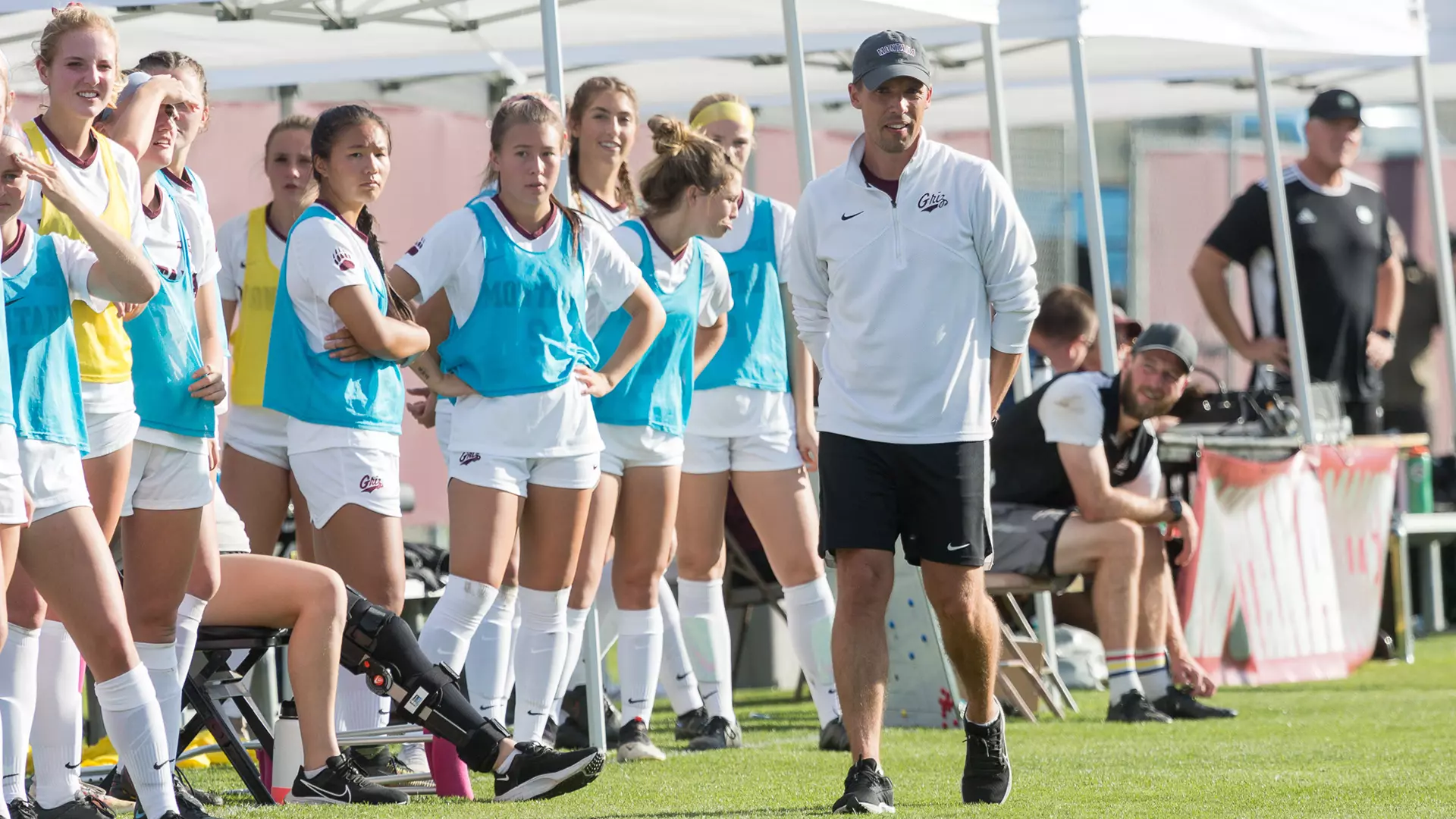
Still, they felt they had no choice. With less than a week before the North Dakota game, they also didn’t have time to implement in-depth instructions, which Citowicki thought might be a hidden advantage. Part of the reason the 4-2-3-1 had become so stale, he felt, was that the players had become so ingrained in its routines, its patterns – pass here, move here – that it became a ballroom dance, every step scripted, measured and, ultimately, predictable. The new formation would be an underground rave, unrehearsed and improvisational. If it went off the rails, so be it.
“It’s not structured,” Citowicki said. “I told my assistants to be hands off of this system completely. I don’t want any pattern work integrated, because it’s not pattern related. It’s not, ‘When this happens, this happens.’ It’s, ‘Skye (Thompson), you play off Riley (O’Brien), whatever way you want to.’ And because of that, it’s unpredictable, and unpredictability leads to chaos within defensive structure, and that leads to goals.”
Go crazy, Citowicki and the staff told the players in the few days of practice leading up to the North Dakota game. Do what you feel.
“Another big piece of the change was, we knew that we had kind of over-coached early in the season, and we had created pretty strong expectations, which bring with them pressure,” Landham said. “And so a new formation just kind of relieved that pressure, like, why not? That was kind of the energy behind it. Let’s see what happens.”
Less than five minutes into the North Dakota game, freshman Carly Whalen, playing on the right wing, made a run to the top of the box, collected a threaded pass from Riley O’Brien and fired a shot past the goalkeeper for her first career goal.
Riley O'Brien with the pass and Carly with the finish pic.twitter.com/VNhD1m2y4t
— Montana Griz Soccer 🐻⚽️ (@MontanaGrizSOC) September 12, 2024
For those keeping track at home, that’s a completely new player (Whalen was averaging just over 18 minutes per game before starting against North Dakota), playing a completely new position (almost all of those minutes had been in central midfield), scoring from a spot on the field that someone playing her position was absolutely not supposed to be in.
After the goal, one of the North Dakota players looked at the Fighting Hawks’ coaches, her helplessness and confusion obvious even from the other bench.
Their right wingback just popped up in acres of space at the top of the box. How do we stop that? What do we do?
“And he’s like, I don’t know,” Citowicki said. “I have no idea what to do right now. And so if you can put that kind of fear into your opponents, it’s pretty cool.”
The Griz went on to win 4-0, with Kayla Rendon Bushmaker, Charley Boone and Washington transfer Chloe Seelhoff joining Whalen in scoring their first goals of the season.
The next week, Montana beat regionally-ranked Boise State 2-0 in one of the finest wins of Citowicki’s tenure, before going on to beat Northern Arizona 2-0 and Northern Colorado 1-0 in their first two conference games.
All told, the Griz have outscored opponents 9-0 in four games since making the switch, and outshot them 70-46.
“Going into the (North Dakota) game, one of the messages was, just don’t ask questions,” forward Skyleigh Thompson said. “And for high-level competitors, that can be hard, because you want to make sure you’re doing your job. … But I think ultimately that’s what led to the success. I know Chris mentioned that it’s just flow. There’s not certain patterns in this formation. It’s just what happens.”
On the field, the 3-4-3 has worked just like Citowicki envisioned – so much so that, at times, it’s difficult to know whether to call it a 3-4-3 or something else. Instead of Schorr being the only target in the box, the Griz have multiple options – as many as three or four when the ball goes wide to one of the wingbacks.
The most welcome consequence of the new look is that it’s completely unlocked Seelhoff, a hyped transfer from a power program who went scoreless in her first eight games with the Griz. Instead of being pigeonholed as the attacking midfielder in the 4-2-3-1, she has the freedom to roam all around the attacking half of the pitch, and has four goals in four games since the switch.
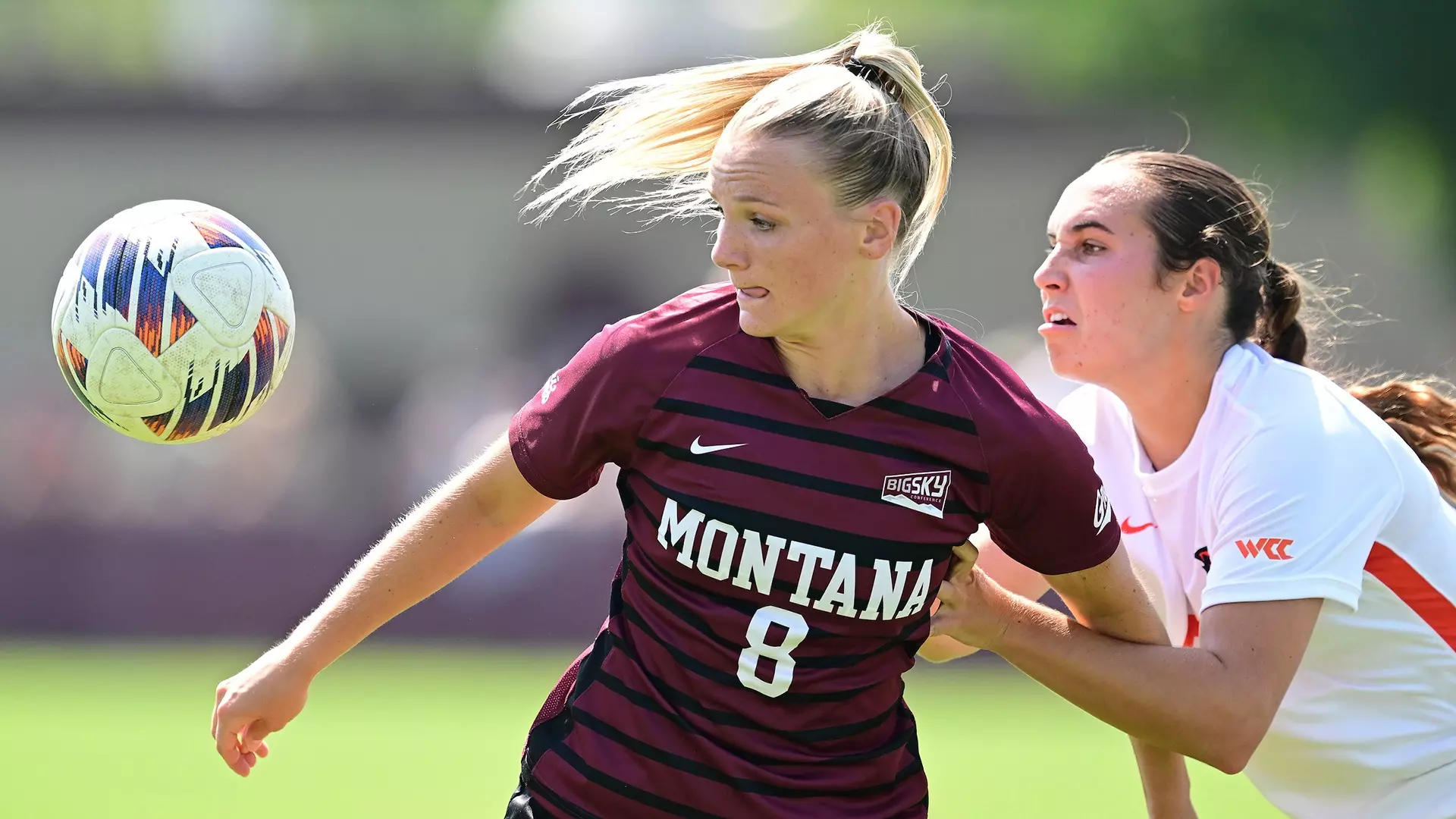
Against North Dakota, she made a run behind the defense, collected a lofted through ball from Whalen and scored one-on-one with the goalkeeper. Against Boise State, it was the complete opposite – facing away from goal, she took a pass to feet, turned her defender and fired a shot off the keeper’s hands and in.
Against Northern Arizona a week later, she scored yet another type of goal, finding space at the top of the box and one-timing a layoff from Jen Estes into the corner of the net.
“I really like to make these runs behind defenders and try to sneak in behind them,” Seelhoff said. “But also, we talked about getting the ball to feet, because that’s another thing I really like to do, is turn and face against players. So it just gives me so much freedom in this position to do things that I like to do.”
At the back, the double pivot midfield of Bass and Ditta and the three centerbacks – a trio that includes, in Boone and Borseth, two of the best in the region – allows the Griz to defend with five players even when Samuelson and Whalen are all the way up the field, while Flynn has been stellar in place of Dvorak, with six shutouts in seven starts.
With the bulk of conference play still to come, the Griz currently lead the Big Sky in scoring margin, shots, shots on goal, save percentage and goals allowed.
“It came with the shifted mindset, from ‘we love shutouts’ to ‘we love winning by more goals than our opponent,’” Landham said. “One of them, as a goalkeeper and as a backline coach, makes me really uncomfortable. … But honestly, that mindset of ‘we love shutouts’ can hold us back. Winning 1-0 or having a 0-0 draw sometimes actually doesn’t feel that great. And seeing our team attack with this much energy and excitement, and with players who are getting forward with lots of support around them, is a really beautiful and exciting style of soccer for us to play.”
***
Shortly after Montana beat Colorado College 1-0 to start the season, Citowicki got a text from North Dakota coach Chris Logan, one of his mentors.
Montana’s back, it said.
Joking or not, that’s been Montana’s identity ever since the Griz won two 1-0 games (and one 2-0 game) to win an unexpected conference tournament title in 2018, Citowicki’s first year at the helm.
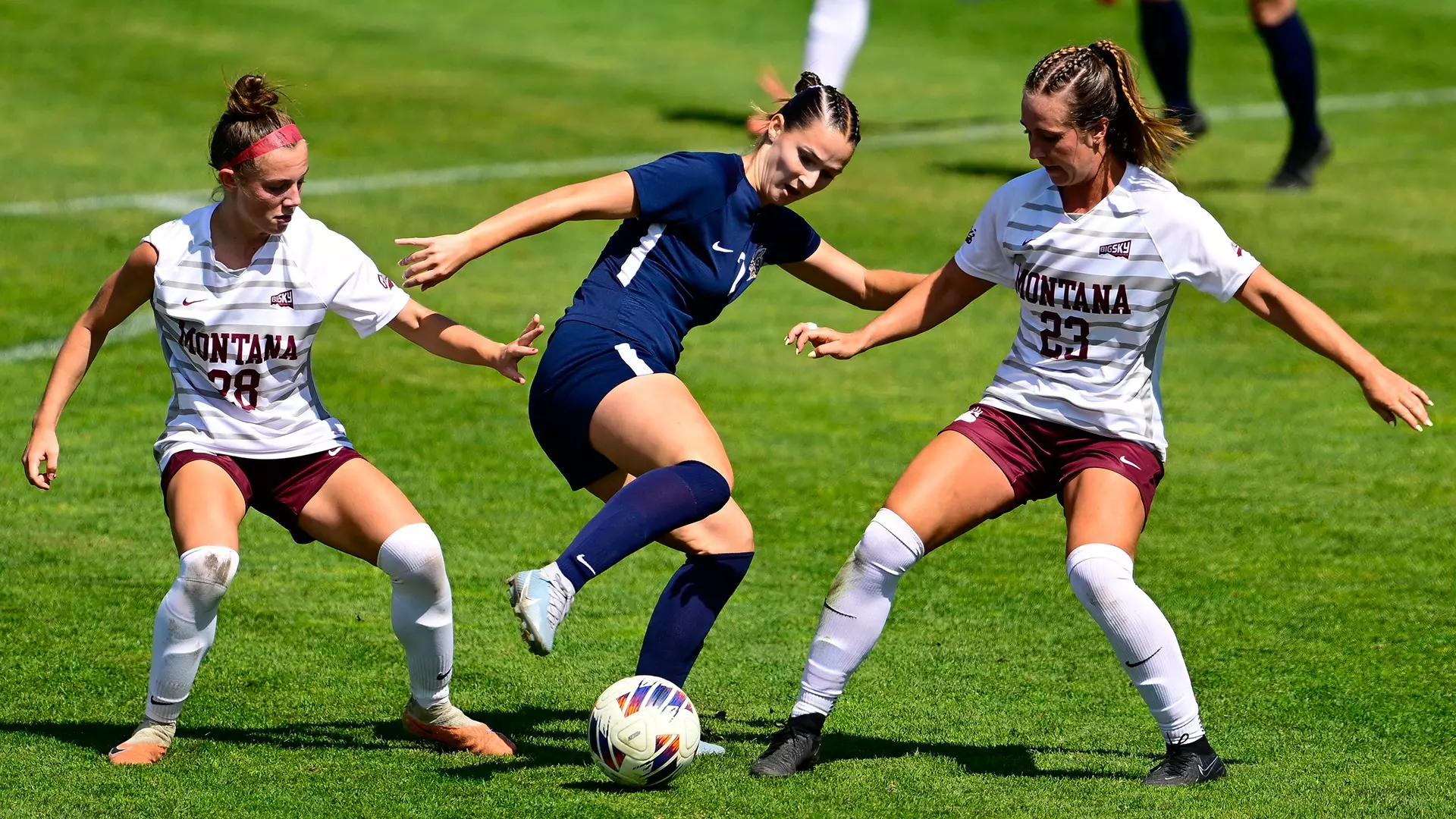
Since then, he’s built a roster that certainly can outscore teams – Montana finished second in the Big Sky in goals scored each of the last two seasons.
But the defensive mentality has stubbornly maintained.
Last year, the Griz gave up just nine goals all season, setting a new Big Sky record in the process. They joined two other Citowicki teams (2021 – 15 and 2019 – 16) in the top 10.
This year, although Montana is still first in the league with just eight goals allowed in 12 games, Citowicki has a response to the ribbing. The Grizzlies aren’t that team anymore, and they’re proving it with every goal.
Stepping onto the plane after the Wyoming game, Citowicki certainly could have carried on with what had been working. The Grizzlies, at that point, were still 4-2-2. They were still the defending Big Sky regular-season champions, still the team that smashed Oregon State 3-0 early in the season.
Instead, he took the chance for reinvention – and ended up with something that’s made Montana soccer better than ever.
“All these random people I talk to in the crowd that I see afterwards, they say, that’s the team. I always knew they could play like that,” Citowicki said. “My wife finally watched them play for the first time live (after the change), because she missed the previous two games. She’s like, that’s exciting. What was that? I’m like, I’m telling you, that’s the new formation. That’s what I tell you at home. It’s different.”


